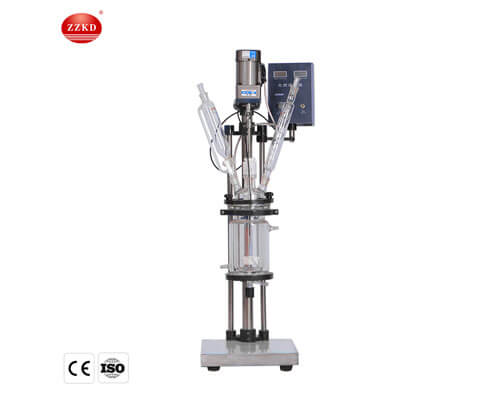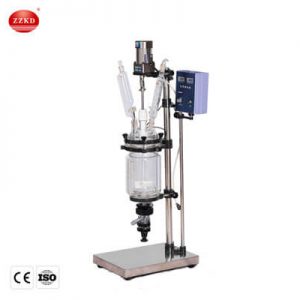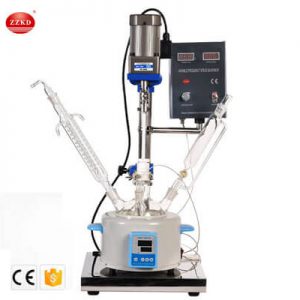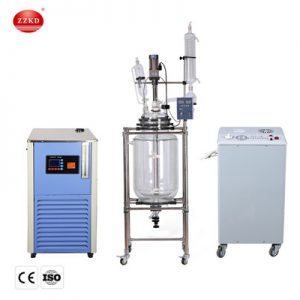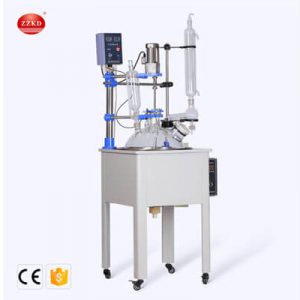1L jacketed glass reactor introduction
A 1L jacketed glass reactor is a laboratory apparatus used for chemical reactions, mixing, and heating under controlled conditions. The reactor is made of borosilicate glass and has a double-layered design. The outer layer is a jacket that is filled with circulating fluid to maintain a constant temperature during the reaction. The inner layer is the actual reaction vessel that houses the reactants and provides easy observation of the reaction.
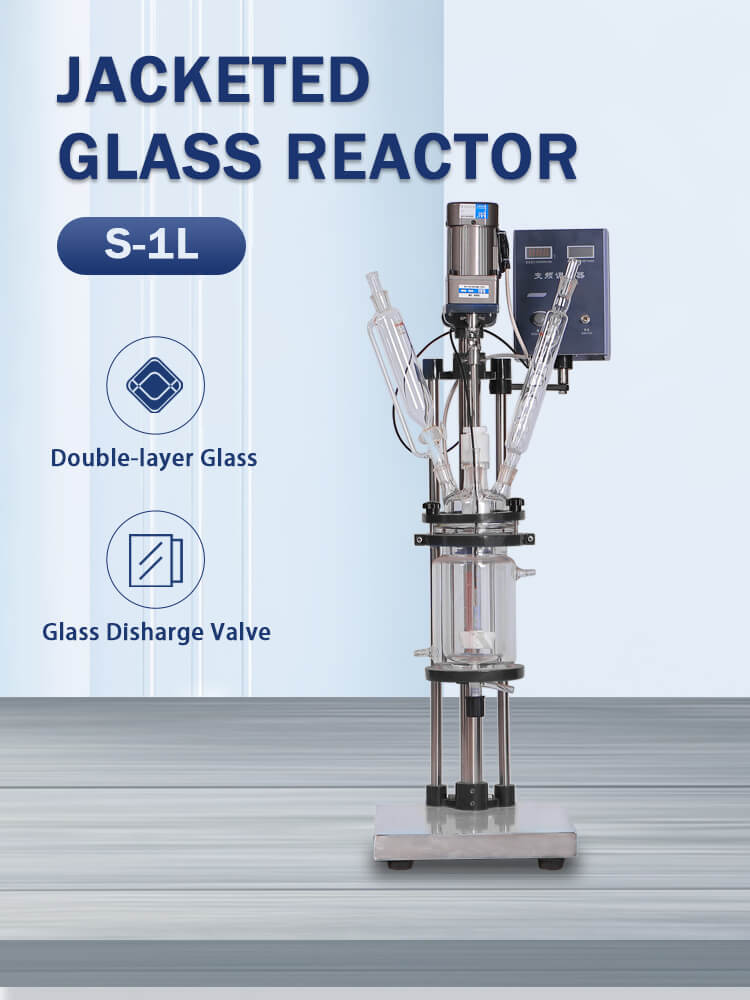
The jacketed design of the reactor allows for precise control of the reaction temperature, which is essential for many chemical processes. The circulating fluid can be heated or cooled using a heating/cooling system to maintain the desired temperature. The jacket also provides insulation, which helps to prevent heat loss and maintain the stability of the reaction.
The 1L capacity of the reactor is suitable for small-scale experiments in chemistry, biology, and pharmaceuticals. The reactor can be used for a variety of applications, such as synthesis of new compounds, analysis of reaction kinetics, and testing of catalysts. The jacketed design of the reactor makes it particularly useful for processes that require precise temperature control, such as polymerization, crystallization, and enzyme reactions.
1L jacketed glass reactor is a versatile and essential tool for laboratory research and development in various fields of science and technology, especially for processes that require precise temperature control.
1L jacketed glass reactor Features:
Borosilicate glass construction: The reactor is made of high-quality borosilicate glass, which is resistant to thermal shock and chemical corrosion, making it suitable for a wide range of chemical reactions.
Jacketed design: The double-layered design of the reactor with the outer jacket filled with circulating fluid allows for precise temperature control during the reaction. The jacket also provides insulation to prevent heat loss.
1L capacity: The reactor has a capacity of 1L, making it suitable for small-scale experiments in chemistry, biology, and pharmaceuticals.
Easy observation: The inner layer of the reactor provides a clear view of the reaction, allowing for easy observation and monitoring of the process.
Precise temperature control: The jacketed design of the reactor allows for precise control of the reaction temperature, which is essential for many chemical processes.
Heating and cooling options: The circulating fluid in the jacket can be heated or cooled using a heating/cooling system to maintain the desired temperature.
Versatile applications: The reactor can be used for a variety of applications, such as synthesis of new compounds, analysis of reaction kinetics, and testing of catalysts.
1L jacketed glass reactor is a highly versatile laboratory apparatus that provides precise temperature control, easy observation, and a range of applications for chemical reactions, mixing, and heating under controlled conditions.
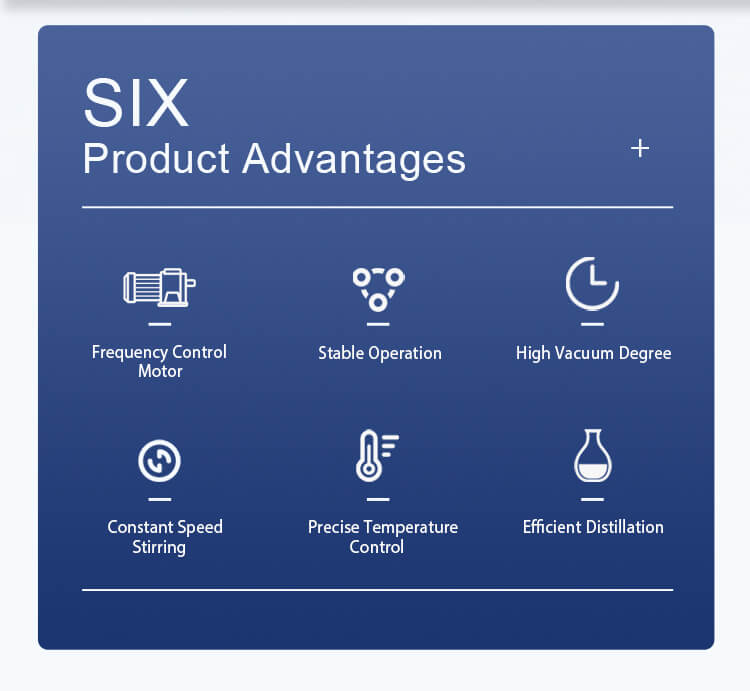
1L jacketed glass reactor Application:
A 1L jacketed glass reactor has a wide range of applications in laboratory research and development in various fields of science and technology. Some of the most common applications of a 1L jacketed glass reactor include:
Synthesis of new compounds: The reactor can be used for chemical synthesis of new compounds, such as pharmaceuticals, agrochemicals, and specialty chemicals.
Analysis of reaction kinetics: The reactor can be used for studying the kinetics of chemical reactions and the effects of different reaction conditions on the reaction rate.
Testing of catalysts: The reactor can be used for testing the effectiveness of catalysts in chemical reactions, such as hydrogenation, oxidation, and polymerization.
Crystallization: The reactor can be used for crystallization of compounds, such as proteins, enzymes, and pharmaceuticals.
Polymerization: The reactor can be used for polymerization of various types of polymers, such as polyethylene, polystyrene, and polypropylene.
Enzyme reactions: The reactor can be used for enzyme reactions, such as enzymatic hydrolysis, esterification, and transesterification.
Chemical analysis: The reactor can be used for chemical analysis of compounds, such as determination of reaction products, identification of reaction intermediates, and analysis of reaction mechanisms.
1L jacketed glass reactor is a versatile laboratory apparatus that can be used for a wide range of applications in chemistry, biology, and pharmaceuticals. The jacketed design of the reactor allows for precise temperature control, making it suitable for processes that require accurate and consistent reaction conditions.
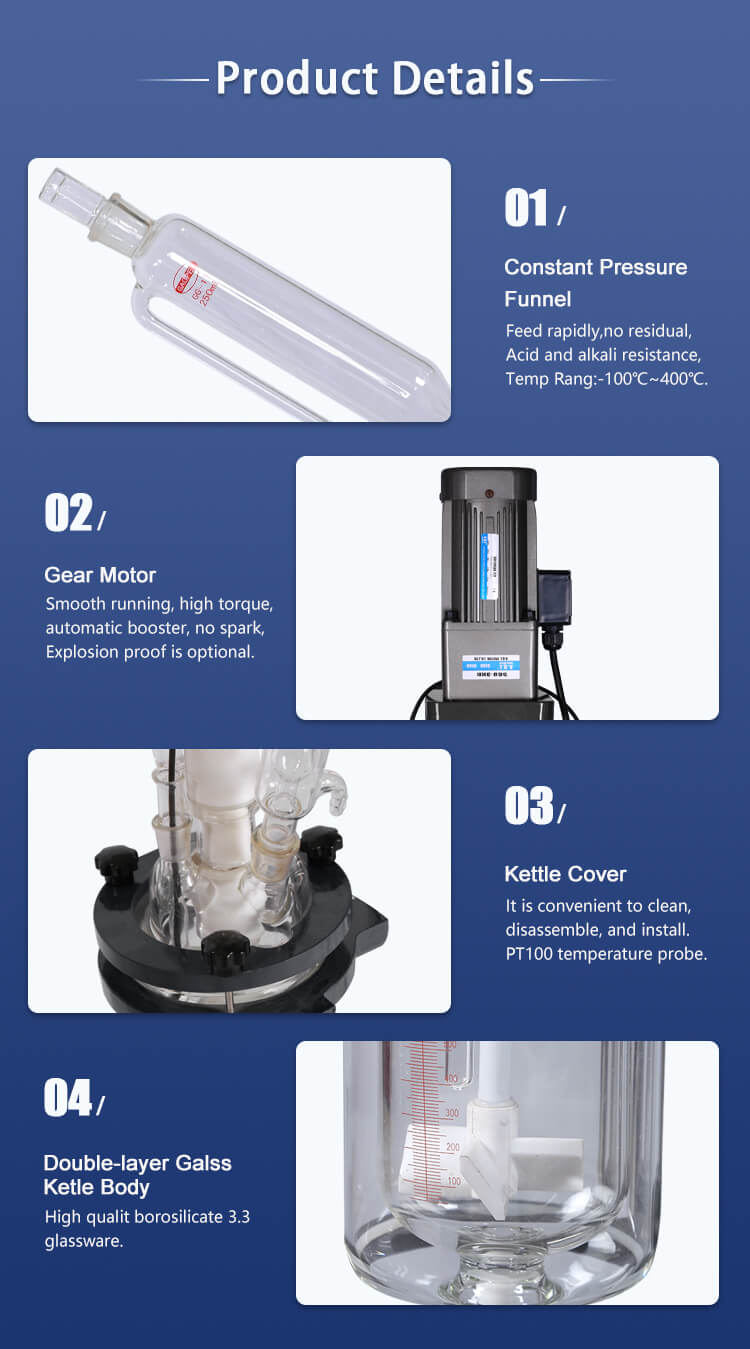
Supporting Equipment for 1L jacketed glass reactor:
DLSB-5/10 Refrigerated Circulator
Storage Volume: 5L
Low temperature range: -10℃~RT
Refrigeration capacity: 280~620W
Rated Power: 420W
SHZ-D(Ⅲ) Water Circulating Vacuum Pump
Power: 180W
Flow(L/min): 60
Lift(m): 8
Max.Vacuum(Mpa): 0.098
Tank Capacity: 15L
GYY-5L Heating Circulating Oil Bath
Storage Volume: 5L
Max temperature:200℃
Flow (L/min):15~20
Temperature control range: Water bath: RT~99°C, Oil bath: RT~200°C
Heating power:2000W
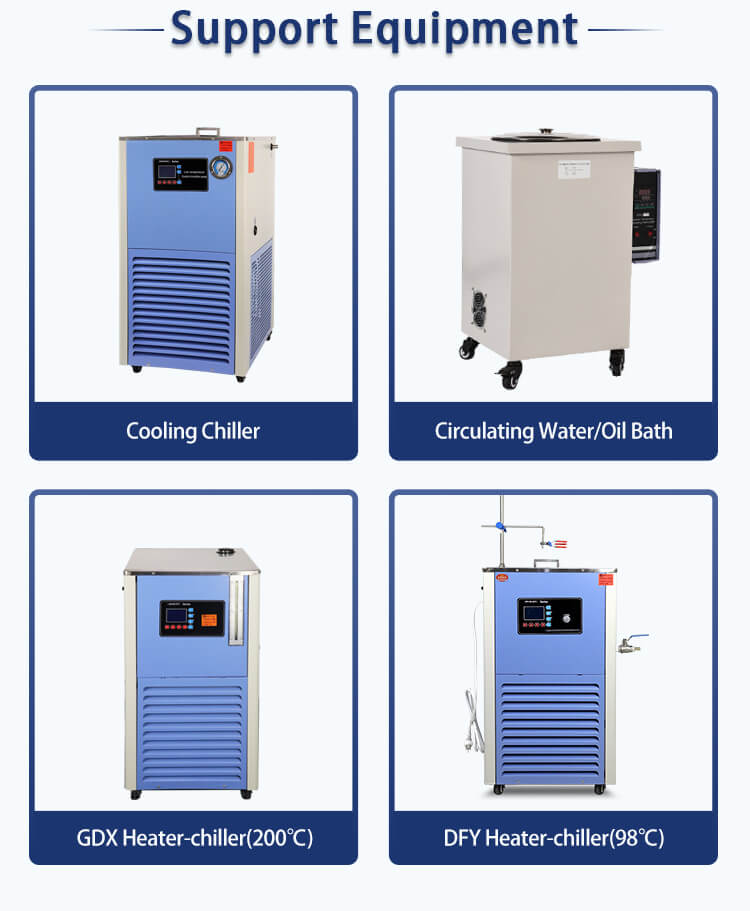
Case : ZZKD Company Selling 1L jacketed glass reactor to a Portuguese Customer
ZZKD is a leading manufacturer and supplier of laboratory equipment and instruments, including 1L jacketed glass reactors. Recently, the company sold a 1L jacketed glass reactor to a customer in Portugal.
The customer, a research scientist at a university in Portugal, was looking for a high-quality jacketed glass reactor to conduct experiments in organic chemistry. The customer needed a reactor that could provide precise temperature control and was easy to observe and monitor during the reaction.

ZZKD’s 1L jacketed glass reactor met all the customer’s requirements, and the customer was impressed with the quality and performance of the product. The reactor provided precise temperature control, and the double-layered design with the outer jacket filled with circulating fluid made it easy to observe the reaction.
The customer was also satisfied with the customer service provided by ZZKD. The sales representative was knowledgeable and helpful in selecting the right product for the customer’s needs. The shipping process was smooth, and the product arrived on time and in good condition.
After using the reactor for several experiments, the customer provided positive feedback to ZZKD, saying that the reactor had exceeded their expectations and was an essential tool for their research. The customer appreciated the quality and durability of the product and the ease of use and observation during the reaction.
Overall, the sale of the 1L jacketed glass reactor to the Portuguese customer was a success, and ZZKD’s commitment to quality and customer service was reflected in the customer’s positive feedback.

